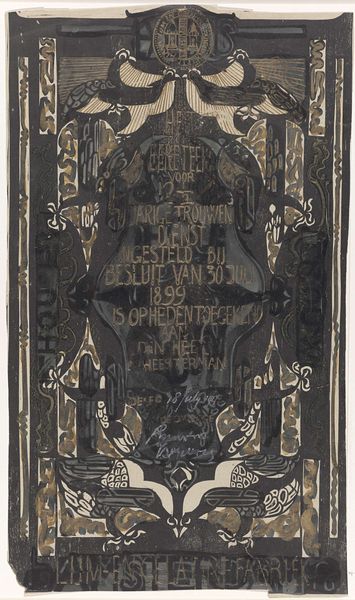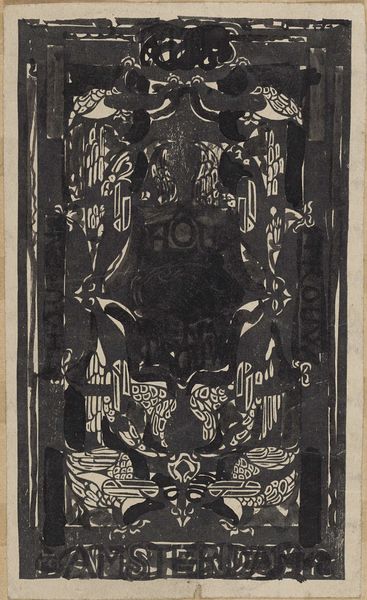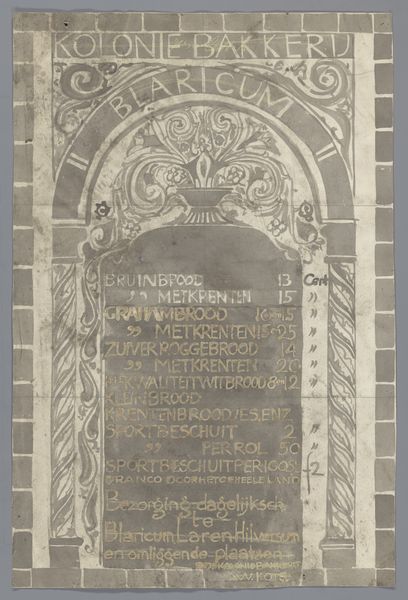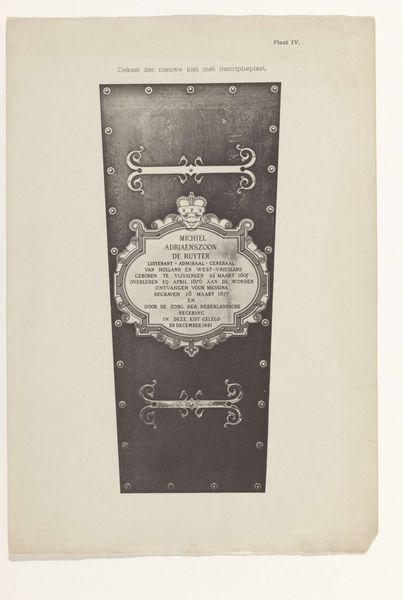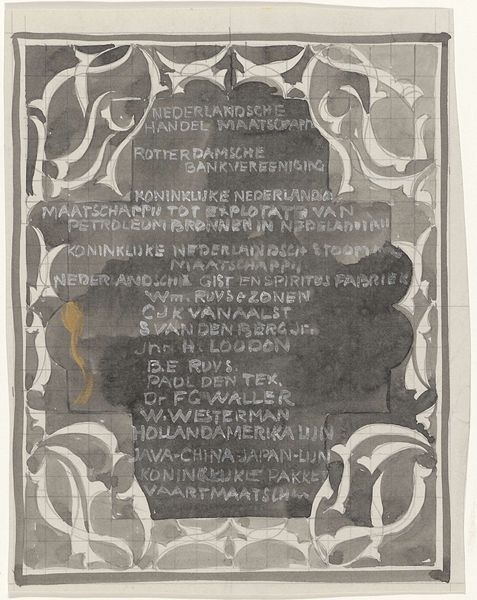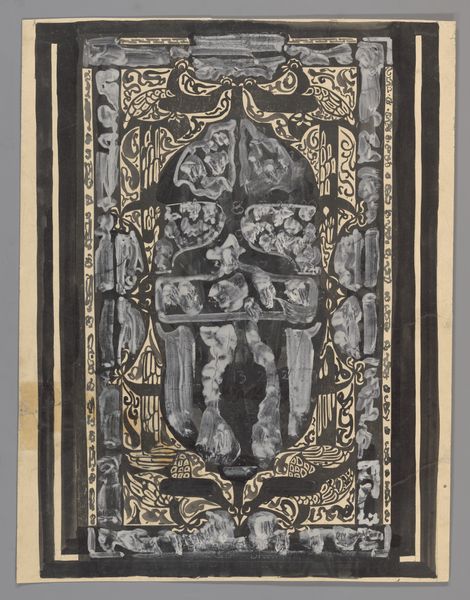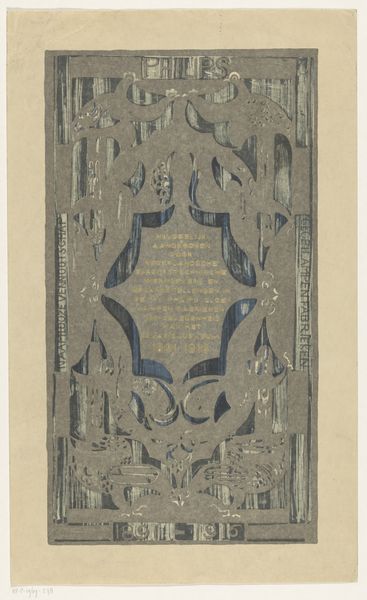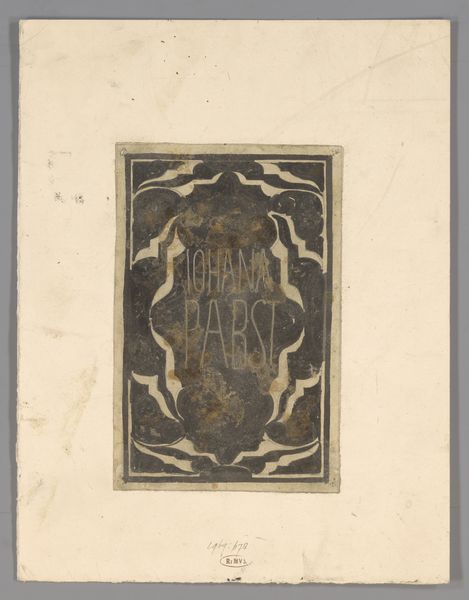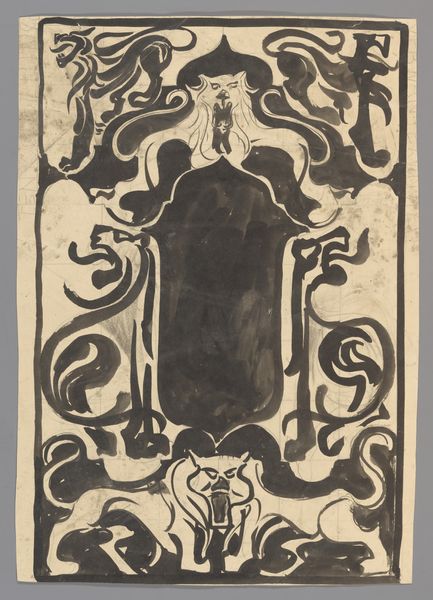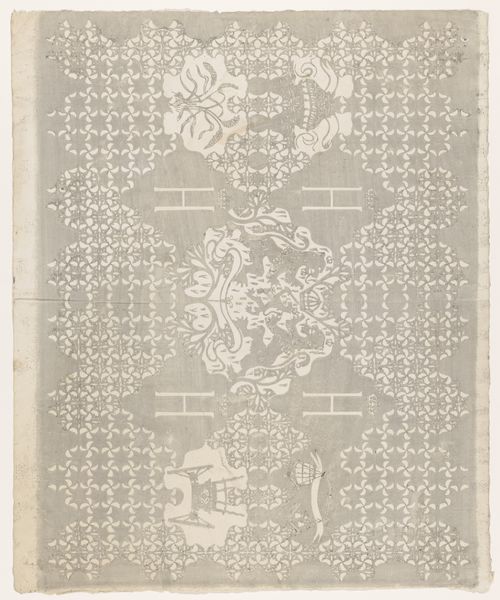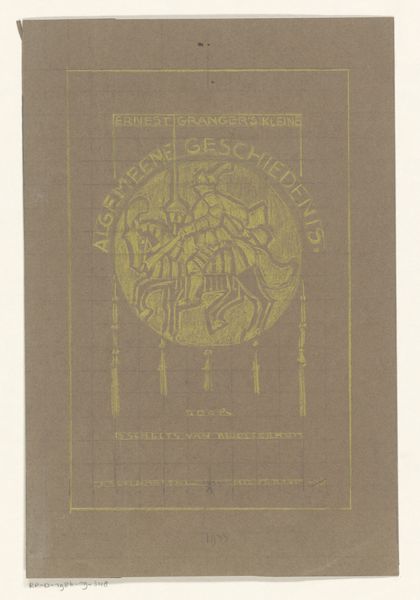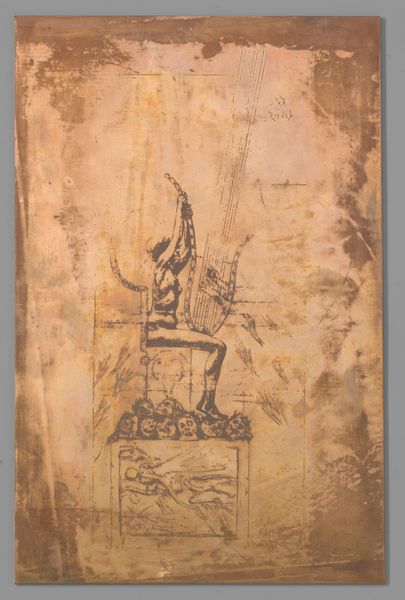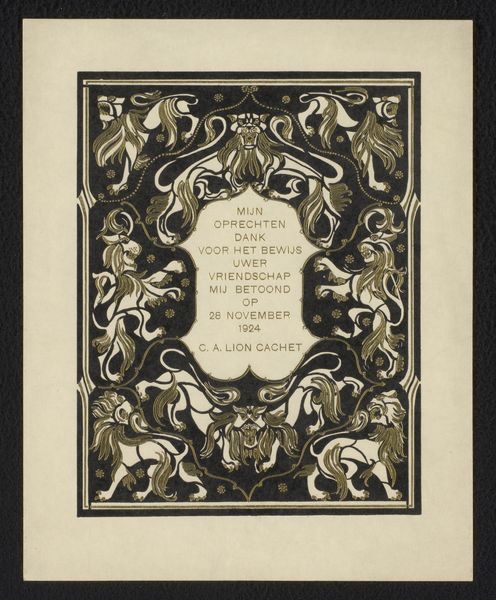
Ontwerp voor boekband van Uit het werk van Johanna Coninckwestenberg Pabst, Bussum 1917 1874 - 1945
0:00
0:00
careladolphlioncachet
Rijksmuseum
drawing, graphic-art, typography, ink, pencil, pen, poster
#
drawing
#
graphic-art
#
art-nouveau
#
typography
#
ink
#
pencil
#
pen and pencil
#
pen work
#
pen
#
poster
#
sketchbook art
#
pencil art
Dimensions: height 421 mm, width 290 mm
Copyright: Rijks Museum: Open Domain
Editor: This is a design for a book binding, "Ontwerp voor boekband van Uit het werk van Johanna Coninckwestenberg Pabst, Bussum 1917," by Carel Adolph Lion Cachet, using pen, pencil, and ink. It feels very dense and intricate, almost overwhelming the text itself. What strikes you about this piece? Curator: Well, immediately my attention is drawn to the means of its production. Consider the deliberate choices of materials: the humble pen, pencil, and ink elevated here in the service of typography and book design. Look closely, and we can almost see the hand of the artist. How does Cachet’s emphasis on process and manual skill challenge our assumptions about what constitutes "high art?" Do you think it elevated or restricted Pabst’s work? Editor: I hadn't thought about it that way. It’s interesting to consider this as a piece of graphic art, and think about it moving past ‘just’ illustration. You mention that it’s elevated, how so? Curator: Think about the social context in 1917. Art Nouveau, with its embrace of craft and ornamentation, was still relatively new. By meticulously hand-drawing every line, Cachet resisted the encroaching industrialization of printing, asserting the value of the individual artisan. The question then becomes how much it reflects, or resists, capitalist modes of book production, in particular the production of Pabst’s written work. Editor: That’s a great point. So, seeing the materials and the craft elevates this piece because it resists industrial modes of production. That gives me a different perspective on the Art Nouveau elements as well. Curator: Precisely! And noticing such details allows us to move past a simple appreciation of its aesthetic appeal and consider the socio-economic implications embedded within its very materiality. We also see more than the materials and craft used, and can understand the art from the moment of production. Editor: It’s amazing to think about how much a deeper look at materials can tell us. Curator: Indeed! It really forces you to think about all the layers, and who this piece was intended for in 1917, versus who it speaks to today.
Comments
No comments
Be the first to comment and join the conversation on the ultimate creative platform.
